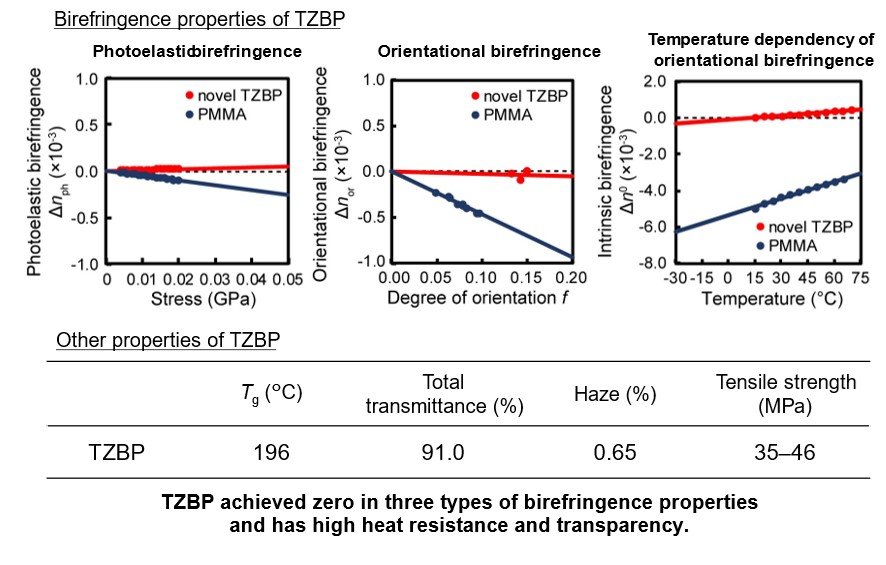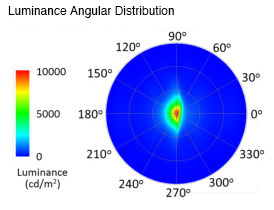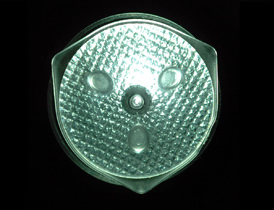Development of Photonics Polymers for High-Definition Displays
The LCD industry has made great strides after its advent in Japan, but as a result of severe international competition, a large share of the market is now occupied by overseas companies. In particular, shares have been taken over by downstream companies such as for LCD TVs and LCD panels, and parts such as the backlight, polarizing plate, and optical film are subject to intense competition. The superior image quality and performance of the LCD display is achieved by numerous parts. By improving the performance of these parts, the image quality and performance of the LCD display will continue to improve. Achieving this will result in strengthening the international competitiveness of Japan's parts makers and LCD display industry henceforth. In this theme, we will develop a new optical film, backlight, and adhesive utilizing photonics polymers ("highly scattered optical transmission (HSOT) polymers," "zero-birefringence polymers and zero-zero-birefringence polymers"). Furthermore, rather than simply improving the performance of each part, our aim is to implement "total design" which considers the entire LCD display to realize a new LCD display system with the world's best standards of image quality and low power consumption.
latest Research Results
Triple-Zero Birefringence Polymer
Our developed triple-zero birefringence polymer (TZBP) achieves "triple zero" in two types of birefringence, orientational and photoelastic birefringence, and temperature dependency of the orientational birefringence. The figure at the left shows that the photoelastic birefringence is almost zero even when stress is applied to the polymer. The figure at the center shows that the orientational birefringence is almost zero even when the polymer main chain is oriented. The figure at the right shows that the intrinsic birefringence (orientational birefringence) is almost zero over a wide range from -30 to 75°C. In addition, our TZBP achieves high heat resistance and transparency. We believe that the TZBP is high practical as a material for polarizer protective films in displays and lenses in smartphones and VR systems.

Random Depolarization Film
At present, most liquid-crystal displays (LCDs) and organic light-emitting diode (OLED) displays emit linearly polarized light through polarizer, which causes blackout problem when the displays are viewed through polarizers such as sunglasses. To address this blackout, quarter-wave plates have been used in existing displays, but a color degradation remains unresolved. As a novel approach to resolve the blackout problem without the color degradation, we proposed a random depolarization film (RDF), which is based on the concept of randomizing polarization like natural light. Because the RDF converts the linearly polarized light into randomly polarized light, the RDF placed on a display resolves the blackout and reproduces original colors of the display. We believe that our RDF will contributes to realizing real-color displays, especially in outdoor displays such as digital signage and automotive instrument panels.

Development of new plastic film using zero-birefringence
We will realize highly efficient film production through the melt extrusion method using zero-birefringence polymers, and aim to provide low cost and the highest performance film in the world.
+ Birefringence Mechanism
 Orientational Birefringence
Orientational Birefringence
Birefringence which occurs when polymer main chains is oriented at above glass transition temperature (Tg).
 Photoelastic Birefringence
Photoelastic Birefringence
Birefringence which occurs when the polymer is elastically deformed at below Tg. Photoelastic birefringence occurs when stress is added and removed when stress is released.
+ Design of zero-zero-birefringence Polymers
 Zero birefringence is produced by cancelling out the anisotropy within the polymer chain through copolymerization of monomers with different polarizability anisotropy (random co-polymerization).
Zero birefringence is produced by cancelling out the anisotropy within the polymer chain through copolymerization of monomers with different polarizability anisotropy (random co-polymerization).
By solving the simultaneous equations indicated at right under conditions Δn0 = C = 0 , we produced zero-zero-birefringence polymers in which two types of birefringence have been made zero simultaneously. It is expected to be applied to the injection molding process and extrusion molding process which had been difficult until now.
[1] A. Tagaya and Y. Koike, et al. Macromolecules, 39, 3019-3023 (2006)
+ Birefringence of Injection Molded Samples
 Birefringence occurs in generic polymer materials during injection molding. As both birefringences in zero-zero-birefringence polymers are accurately cancelled out, light leakage due to birefringence is not observed.
Birefringence occurs in generic polymer materials during injection molding. As both birefringences in zero-zero-birefringence polymers are accurately cancelled out, light leakage due to birefringence is not observed.
+ Extrusion Molded Film
 By manufacturing optical film for LCDs using the melt extrusion method which has high production efficiency, we expect to produce LCDs with high image quality at low cost.
By manufacturing optical film for LCDs using the melt extrusion method which has high production efficiency, we expect to produce LCDs with high image quality at low cost.
Observation of extrusion molded film (at right)
With ordinary polymer film, light leakage and color irregularities due to birefringence is observed. (photo at left)
With zero-zero-birefringence polymers, light leakage does not occur and "black" is observed. (photo at right)
Development of thin, low power consumption backlights using the highly scattered optical transmission (HSOT) polymer
We are developing thin, low power consumption backlights using highly scattered optical transmission (HSOT) polymer which can scatter light with high efficiency and produce high grade irradiated light. In a rapidly changing LCD field, we are aiming to realize a high performance backlight which meets the needs of the marketplace.
+ HSOT Polymer Backlight



HSOT polymer has achieved approx. twice the luminance of conventional transparent backlights .
+New LCD display proposed by KPRI
Commercialized LCD (TN)

Formerly, the birefringence of the light passing at an angle through the liquid crystal layer was compensated with retardation film to produce a wide viewing angle.
Our Proposed LCD

With the new method, applying the HSOT Polymer as the backlight and film will make for an LCD with small color change depending on the viewing direction.
References: A. Tagaya and Y. Koike, SID Symp. Dig. Tech. Pap., Vol.43, 737(2012).









